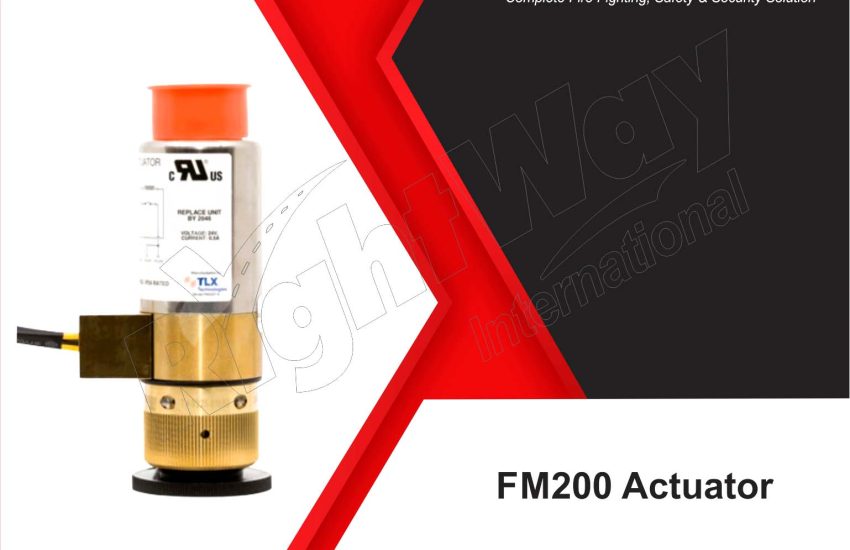The FM200 Actuator is a critical element in fire suppression systems utilizing FM200 gas. This device plays an essential role in controlling the release of the extinguishing agent, ensuring rapid and effective fire suppression. In this article, we will explore the features, functions, installation, maintenance, and benefits of FM200 actuators.
What is an FM200 Actuator?
An FM200 actuator is a mechanical device that triggers the discharge of FM200 gas in a fire suppression system. It responds to signals from the fire detection system or manual controls, activating the release of the extinguishing agent to combat fires quickly.
Key Features of FM200 Actuators
- Responsive Mechanism: FM200 actuators are designed for quick activation, ensuring that the fire suppression system responds immediately to threats.
- Durable Construction: Made from high-quality materials, these actuators are built to withstand the harsh conditions often found in fire protection environments.
- Compact Design: Many FM200 actuators feature a compact design, allowing for easy installation in various configurations.
- Manual Override: Some models include a manual override option, providing additional control in emergency situations.
Functions of FM200 Actuators
FM200 actuators serve several critical functions:
- Discharge Control: The actuator controls the release of FM200 gas, ensuring a targeted and efficient response to fires.
- Integration with Detection Systems: It seamlessly integrates with fire detection systems, allowing for automatic activation when smoke or heat is detected.
- User Activation: Operators can manually activate the actuator if needed, providing an extra layer of control during emergencies.
Installation of FM200 Actuators
Steps for Proper Installation
- Site Assessment: Evaluate the installation site to determine the best location for the actuator, ensuring accessibility and visibility.
- Mounting: Securely mount the actuator according to the manufacturer’s guidelines to position it for optimal performance.
- Wiring Connections: Connect the actuator to the FM200 system and any associated control panels or fire detection equipment.
- Testing: Conduct thorough tests after installation to verify that the actuator operates correctly and activates the discharge of FM200 gas as intended.
Maintenance of FM200 Actuators
Regular maintenance is essential to ensure the reliability of FM200 actuators:
- Visual Inspections: Conduct routine visual inspections to check for damage, corrosion, or any signs of wear.
- Functional Testing: Periodically test the actuator’s response to both automatic and manual activation to ensure proper functionality.
- Professional Servicing: Schedule inspections by certified professionals to ensure compliance with safety regulations and manufacturer recommendations.
Benefits of FM200 Actuators
Utilizing FM200 actuators offers several advantages:
- Rapid Fire Suppression: Quick activation leads to efficient fire extinguishment, minimizing damage and downtime.
- Enhanced Safety: Controlling the discharge of FM200 gas protects occupants in the event of a fire.
- Versatility: You can integrate FM200 actuators into various fire suppression systems, making them suitable for a wide range of applications.
Conclusion
The FM200 actuator is a vital component in fire suppression systems, ensuring the efficient release of FM200 gas to combat fires effectively. By understanding its features, functions, installation process, maintenance requirements, and benefits, businesses can enhance their fire safety measures. Investing in a reliable FM200 actuator is a proactive step toward safeguarding lives and property from fire hazards.


